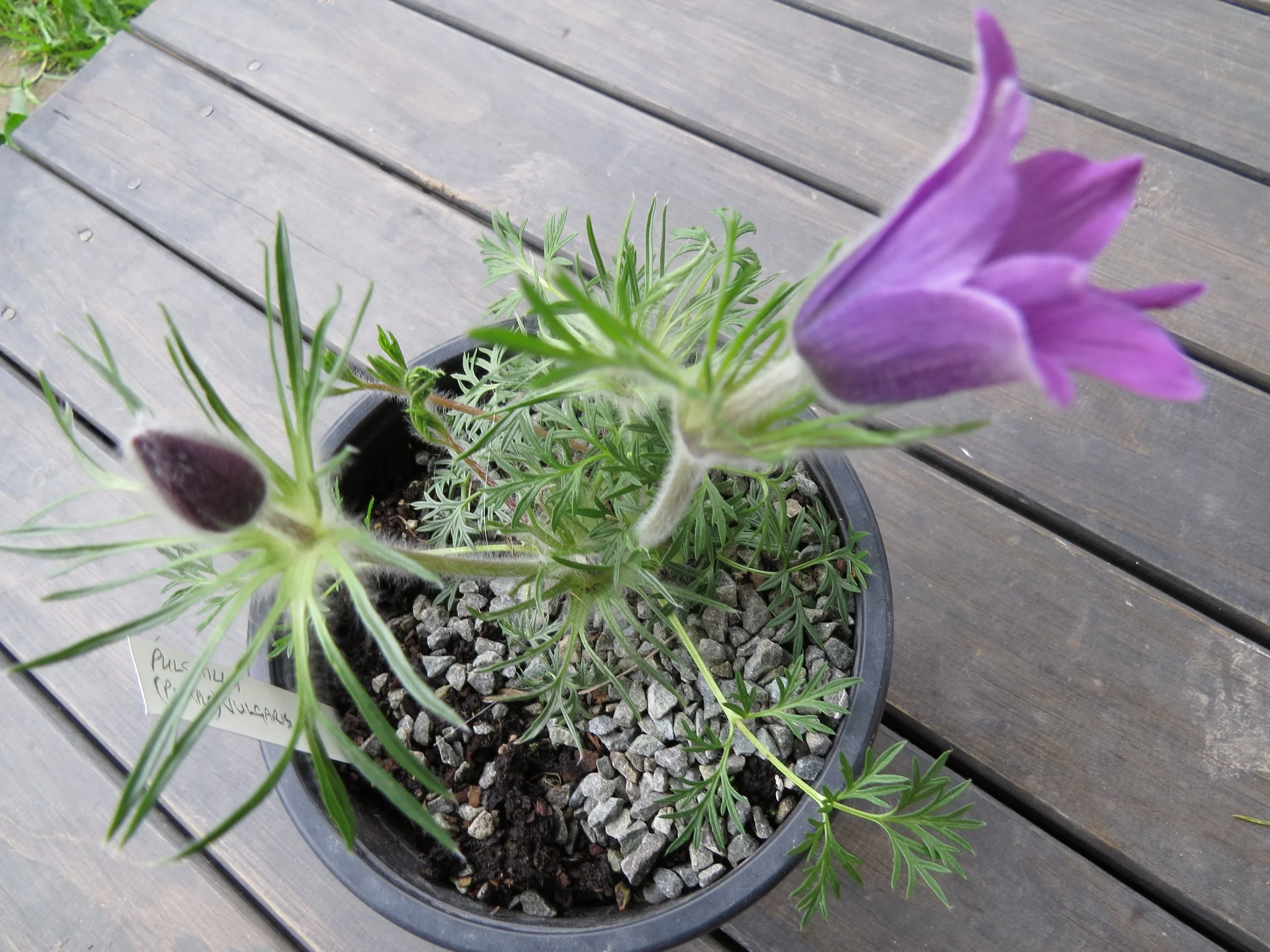Pulsatilla, Pasque flower
Pulsatilla, Anemone pulsatilla, flowers around Easter-time in Europe (where it originates from). Iit is known as Pasque flower as the flower was used to dye Easter eggs in times gone by.
I had thought I'd lost mine but I see that it is just emerging. It is an herbaceous perennial that many people grow in their gardens because the flowers are so beautiful. Anyway, I bought another. A gardener can never have too many plants. Right? Pulsatilla is a Canterbury gardener's dream plant as it's resistant to both frosts and drought and likes a sunny spot in the garden.
Note: this herb must be dried to avoid its corrosive side effects. The aerial (top) parts are harvested at the time of flowering.
Pulsatilla is a nervine (soothing for the emotions) and a sedative. It may be useful for soothing hyperactive people, insomnia and when someone gets tension headaches. As it has pain-relieving (anodyne) and antispasmodic actions, it may be indicated when someone has pain in the reproductive system in both women (ovaries) and men (testes). The antispasmodic and nervine actions mean it may mitigate asthma. Externally, an oil steeped with this herb may ease earache.
There have been limited studies on pulsatilla but there have been some promising indications that it may have both antimicrobial and antifungal actions.
The beautiful pulsatilla, Anemone pulsatilla.

